The position of lacrosse goalie is one of repetition. And for any sport that involves lots of repetition, it is very easy to develop bad habits.
Baseball pitchers who repeat the same throwing motion over and over suffer from bad habits on occasion just like lacrosse goalies who must repeat the same save movement over and over.
In working with youth goalies, the same bad habits tend to surface time and time again. Even more experienced goalies can develop some bad habits over time if they’re not careful.
The worst part is many lacrosse goalies don’t even realize they have these bad habits. That’s where the power of a good lacrosse coach comes into play. They can help spot and correct these bad habits.
But even being aware of bad lacrosse goalie habits can be half the battle in getting them corrected.
Flinching or being scared of the ball is by far the single worst and most common habit a goalie can have. However this action is not often voluntary.
I discussed remedies for flinching, false steps, and general fright of the ball in my post 4 Common Lacrosse Goalies Problems and How to Fix Them.
Today I’m going to write about bad lacrosse goalie habits that are completely voluntary and can be fixed with the right coaching, the right preparation, and the right drills.
As lacrosse goalies our goalie in making a save is to make a single, precise movement to the shot.
When we drop our hands on high shots, it’s a double movement. Hands drop and then do back up.
Now you still may make the save like the young keeper does in the GIF above but as the players get better and the shots get faster, this bad habit will ruin you.
This habit is so common in young goalies (older ones too for that matter) that I wrote an entire post on how to stop dropping your hands on the shot.
When I first warmup a keeper, without giving any instruction I’ll analyze their tendencies and see what needs to be fixed.
So many goalies upon making a save will throw the ball back to the coach and then turn to look at the pipe to get setup in their ready position.
This means looking away from the ball. Bad!
As a goalie we never want to look away from ball. We should be concentrating on the ball at all times.
Getting the goalie to break this habit of looking away from the ball to check his position will vastly improve their concentration.
There is enough going on on the lacrosse field. The goalie doesn’t need to distract himself by taking his/her eyes off of the ball.
This one is similar to the first item. Some goalies will make marks in the dirt or tape on the turf within the crease so they know the right positions on their arc.
But guess what? To use them, you have to look down!
And as we just learned looking away from the ball is a bad habit that needs to be broken.
If the goalie is struggling to find the right spot on their arc, you can do two things:
1. Landmark Technique
Teach your goalie to pick out large features of the landscape around the field such a tree or a building. Select one for left center (45 degree) and right center (45 degree). For top center you can obviously use the other goal.
As the game is played, these landmarks can be viewed in the background without focus. This way the goalies doesn’t drop the eyes and take focus off the ball but still maintains good position in between the pipes.
2. Switch to a Flat Arc
One of the benefits of playing a flat arc is that its easier to get setup in the right position.
If your goalie struggles with maintaining good positioning when moving through the different spots on his arc perhaps consider trying a flatter arc.
Most goals are made by moving the goalie out of good position so setting up in the right place on the arc is half the battle when trying to make saves.
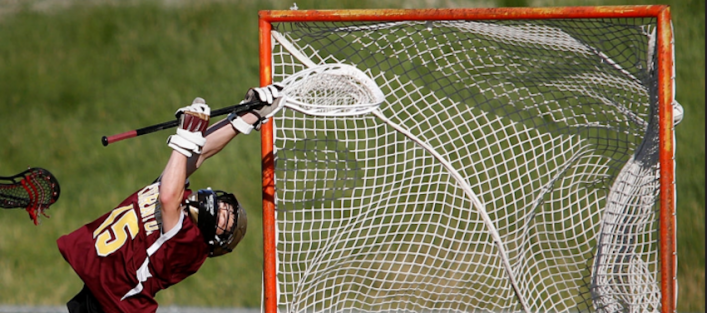
Besides saving shots the lax goalie has many other responsibilities.
They’re the leader of the defense and need to call out the right lacrosse defensive terms to ensure their team knows whats going on.
However, many times these other responsibilities get in the way of the goalie’s primary responsibility: stop the shot!
Goalies must be ready for shots as soon as the ball enters their defensive side.
If you have the right ready stance, it shouldn’t be uncomfortable to stay in it for a full 5 minute possession by the other team.
If it is tiring, that’s a clear sign that you need to hit the gym to build strength in your shoulder, glute, and leg muscles.
There’s really no excuse for this one and yet I see it happen all the time, even at the top levels. Goalies need to be ready for every shot!
Notice in the photo below the shooter is about ready to rip one and yet the goalie is not ready. He’s checking is pipe, from his feet it looks like he’s moving. Nothing compared to what I discuss in the perfect lacrosse goalies stance.
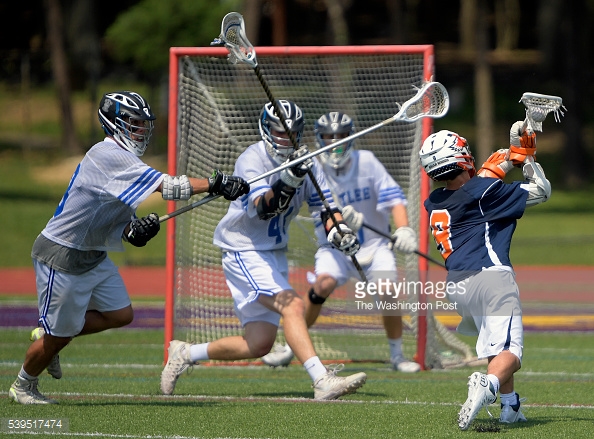
Analyze your goalie (or yourself) during practice or games when the shots are being released. Are you in a good ready position for 100% of the shots you face?
If you’re not ready for the shot, break that habit immediately. Always be ready, even in practice drills.

There are actually some respected lacrosse goalie coaches (like Trevor Tierney shown above) that teach this technique where the keeper drops to their knees on low shots.
But I consider this a bad habit. I never coach my goalies to drop to their knees on low shots.
You will make more saves over time staying on your feet.
In the event of a rebound you’re better prepared to make a second save if you stay on your feet. Furthermore, going to your knees often produces more rebounds because the goalie cannot get his body over the ball to control the bounces.
Going down to your knees on the save limits your ability to make outlet passes. Many times one of your middies will have slipped behind the offense and by staying on our feet during a save can we make that quick outlet pass to start the fast break.
That outlet pass may only be there for a split second and in the time the keeper goes from knees back to feet the opportunity may be gone.
Also remember you only have 4 precious seconds to throw an outlet pass or leave the crease once you gain possession. Getting back up from your knees to your feet eats up one of those valuable seconds.
Finally its seems that for goalies who’ve been taught to drop their knees, this becomes their default action for every shot especially when they’re nervous. They’re dropping to their knees instead of reacting to the shot. This is horrible as smart attackman will simply start shooting high and score goal after goal on you.
Therefore if the goalie has developed the habit of dropping to his/her knees on low shots this needs to be broken.
Be sure to check out my post on tips for saving low shots.
If you’ve read this blog for awhile you should understand the basic mechanics of making a save.
Our lead foot takes a step to whatever side the ball is shot on. Many goalies have no problem with this step however they forget to follow with a trail step.
As a lacrosse goalie we want to get our entire body behind the ball during a save.
The trail step, which is taken with opposite foot that took the lead step, will help ensure our body is behind the ball during a save.
If you’re not taking a trail step you’re also not exploding off of your back foot to attack the ball.
The trail step allows us to finish the save in a nice and even balanced position, ready to make a quick outlet pass or another save if there was a rebound.
In this GIF of professional lacrosse goalie Kip Turner of the Chesapeake Bayhawks we see that he takes his lead step with his left foot. Then watch the trail step with his right foot to ensure his body stays behind the ball. He ends this save process in a very balanced position, the exact purpose of our trial step.
If you’re goalie is not finishing his/her saves with a trail step, you can do the drill called “The Glyde” that I describe in my post on lacrosse goalie drills.
This drill helps goalies focus on completing the save process with a trail step.
A lacrosse goalie’s body should always stay square to the shooter.
Pre-shot, during the save process, and post shot our body should remain square to the shooter.
Many goalies have a bad habit of twisting or rotating their bodies while making a save. This is especially prevalent for the off-stick saves where you have to rotate the stick to meet the ball.
The problem with rotating our torso is that:
1.) We reduce the surface area of body. Our chests have much more surface area than the side of the body. So by keeping our body square to the shooter we remain “big” in the goal. Which is to say we take up the most surface area possible.
2.) Risk injury. Goalies wear pads on their chest, not on the sides of body. Therefore, a goalie who has a bad habit of turning their body on saves is subjecting themselves to an unnecessary injury risk. Keep your body square to the shooter and a shot that happens to get by your stick will hit you in the chest pad, not in the exposed ribs.
While warming up the goalie or during drills point out when the goalie turns his body and attempt to correct it immediately. You can also point out these moments while reviewing video with your goalie.
If you’re looking for a specific lacrosse goalie drill to help keepers maintain their torso square to the shooter on shots, try the Football Drill described in this post.
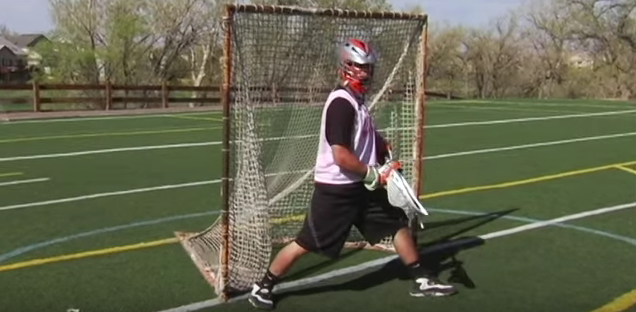
Never turn your body like this during a save. Always remain square to the shooter.
A common bad habit especially among newer goalies is not talking enough on defense.
The goalie is a leader of the defense and a leader who doesn’t communicate hurts the team.
I wrote a full post on how to get your defense and goalie to talk more.
The summary version is this.
1.) Make sure you know what to say
Many times lack of communication stems from the goalie’s lack of knowledge of the defense. Review all the defensive terms and start using them in practice.
2.) Use names
In the chaos that can be a lacrosse game your teammates are going to hear you better if you use their name. People respond better to their names.
3.) Be Loud in Practice
If you’re a naturally shy or quiet person, you’re going to have to break that habit. You have to get outside your comfort zone. When I was a shy sophomore our coach used to put me in a circle with the entire team surrounding me and make me yell stupid things at the top of my lungs.
Whatever it takes to break out of your comfort zone and break the habit of not communicating to your defense.
The goalie needs to be the loudest player on the field.
Even if you know all the proper defensive terms to use, if your team can’t hear them, what’s the point?
A goalie’s communication needs to be loud, clear, and with the proper tone.
For a great example of how loud a goalie needs to be checkout former Loyola Greyhounds goalie Jack Runkel communicating and encouraging his defense in a game against Duke.
If your goalie has the bad habit of not communicating loud enough be sure to emphasize this throughout the practice.
When you’re standing on the sideline, can you hear the goalie’s commands loud and clear? If not, he/she needs to improve their voice volume.
You can also have them perform some voice strengthening drills to develop a stronger voice that can be heard by the entire team.

Making a save in the sport of lacrosse is hard. That’s why even top goalies only have a save percentage between 50-60%
So when a goalie does make a save and then makes a lazy outlet pass for a turnover it drives a coach absolutely nuts.
There’s no excuse for lazy outlet passes.
Throwing lazy outlet passes is mostly mental. The goalie after making the save relaxes and doesn’t put his/her full effort into a very critical aspect of goalie’s games: leading the clear.
So assuming that the goalie knows how to throw proper outlet passes, coach them to remain mentally alert after the save and put 100% effort into every pass.
Many goalies have the bad habit of what I call “happy feet”.
When we’re setup in our lacrosse stance we want to be absolutely still.
Happy feet is when a goalie is moving his feet or even body or hands while waiting for the shot to come.
I’m not talking about moving from one spot to another while on your goalie arc. That movement is required.
But once you’re in the right spot on your arc you should be still. If you’re moving it could cost you a 1/2 step or a fraction of a second to then move in the right direction of the ball.
And as we’ve learned, especially at the upper levels, a fraction of a second is the difference between a goal and a save.
When our body is still we’re ready to explode in any direction to save a shot.
Please don’t confuse being still with not being in an athletic stance. As we learned in the perfect lacrosse goalie stance, we’re always in an athletic position. This bad habit simply refers to excess and unnecessary movement.
This bad habit is somewhat inherent and a goalie might not even realize they’re doing it. Videotaping a goalie during practice and showing him/her the bad habit can help them identify when they might be going into ‘happy feet’ mode.
Also repeating a key word like “STILL” might help the goalie focus on remaining still while setup in their ready stance.

The idea of lacrosse saves is that we get our body behind the ball. This isn’t like an ice hockey goalie where we attempt to make kick saves.
Therefore if a lacrosse goalie is continually kicking their leg out during saves to either side of their body this is a bad habit that must be changed.
Why? Because when we’re kicking out leg out we’re not stepping to get in front of the shot. We’re not driving off our back leg to get our body and stick in the right place to make a save.
I’ll admit it makes for a dramatic photo hence the reason we see it on the cover of Lacrosse Magazine. But notice in the cover pic how this goalie’s body is not behind that shot. If the ball misses her stick, or hits the top and ricochets, that’s a goal for sure.
If you notice yourself or your goalie kicking instead of driving off their back foot and stepping to the ball, be sure to correct this bad habit.
The final bad habit I see lacrosse goalies indulge in all the time has to do more on the mental side of this position.
It’s negative self-talk.
If you had a teammate who talked to you the way you talk to yourself, would you want to be around that person?
Pay attention to your self-talk. For most of us, it’s horrible. Things like:
- I’m a horrible goalie
- We lost that game because of me
- Our team would better if someone else was the goalie
Make an effort to stop any and all negative self-talk, and replace it with something positive.
Have your own back.
To be an All-American lacrosse goalie you must identify and eliminate all bad habits.
By first understanding these common bad habits for lax goalies we can ensure that we’re not doing these behaviors on the field.
As a coach you’ll want to look for these bad habits and correct them as soon as possible.
With practice, recognition, and repetition there’s no reason any lacrosse goalie should continue with these 11 bad habits because they’re 100% voluntary.
Until next time! Coach Damon
Any bad lacrosse goalie habits you have that I missed? Let me know in the comments.
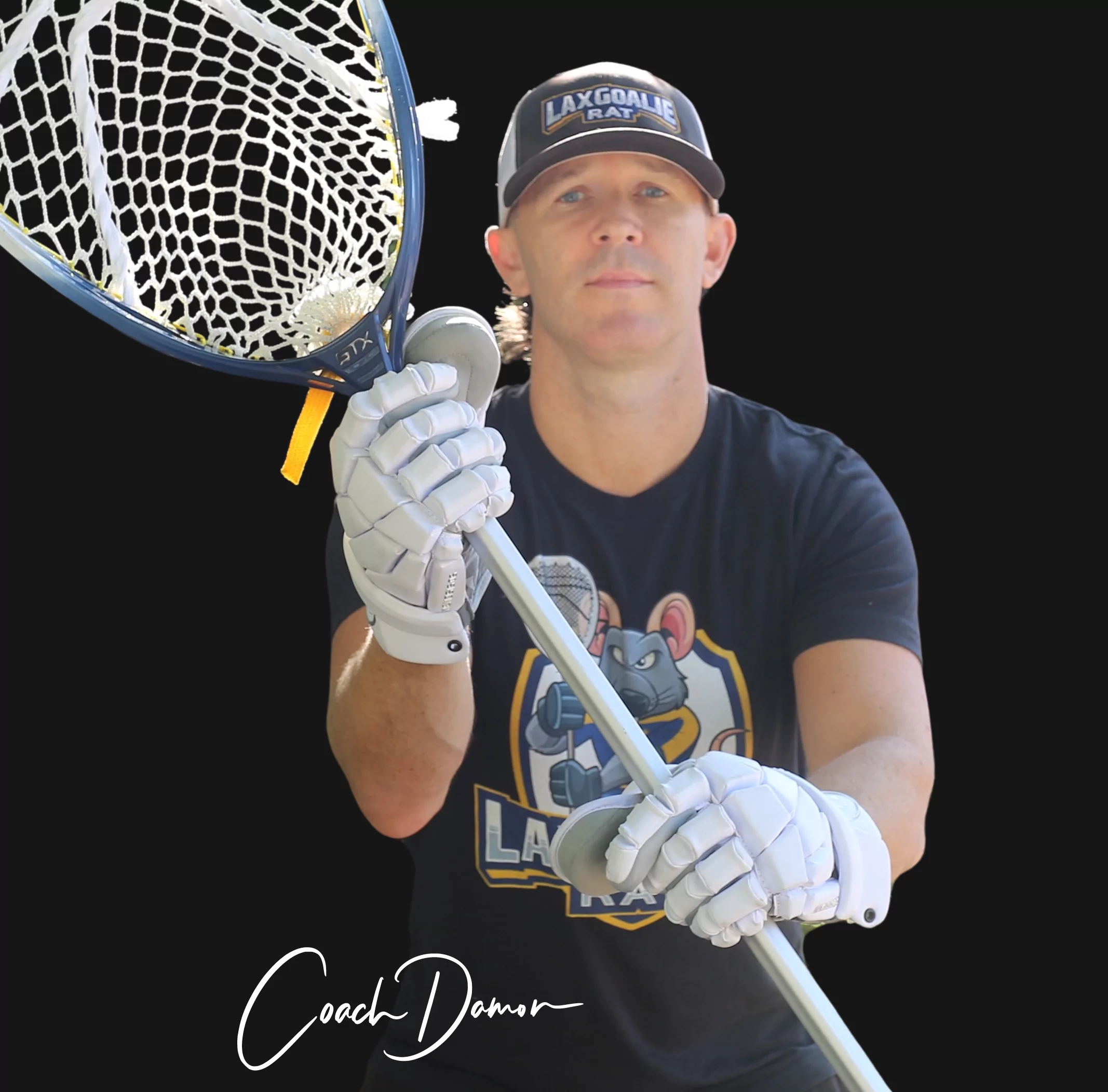







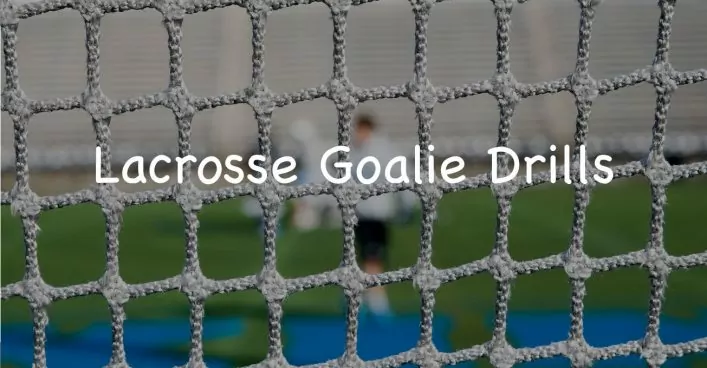 14 Amazing Lacrosse Goalie DrillsAug. 1, 2024
14 Amazing Lacrosse Goalie DrillsAug. 1, 2024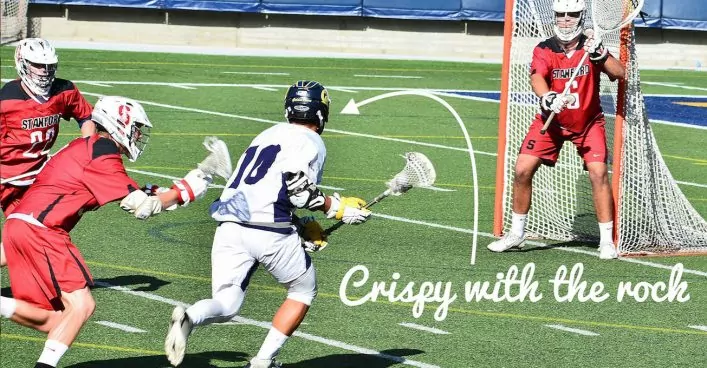 Quick Guide To Lacrosse Slang TermsApril 14, 2025
Quick Guide To Lacrosse Slang TermsApril 14, 2025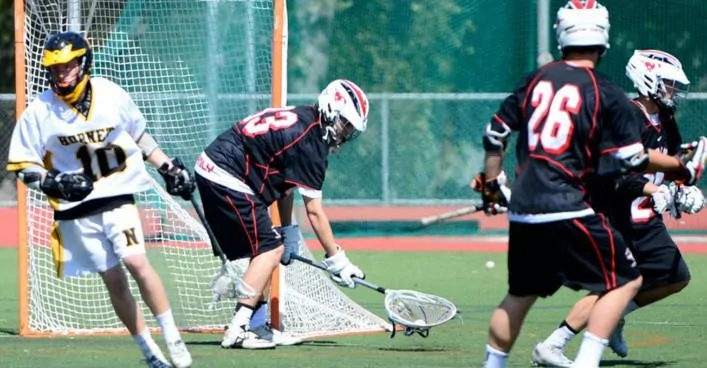 Lacrosse Goalies Rules To KnowJune 28, 2022
Lacrosse Goalies Rules To KnowJune 28, 2022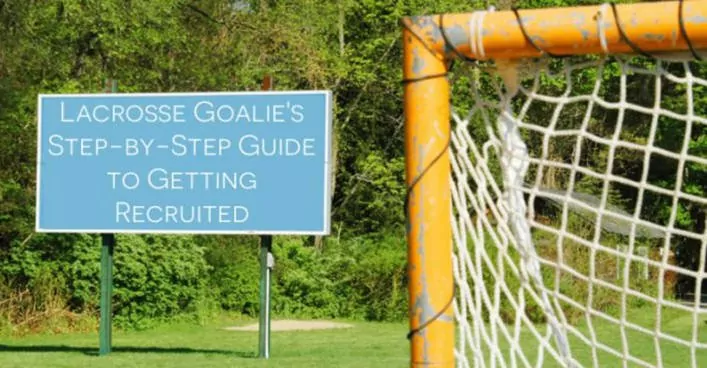 Lacrosse Goalie Step-by-Step Guide to Getting RecruitedFebruary 6, 2022
Lacrosse Goalie Step-by-Step Guide to Getting RecruitedFebruary 6, 2022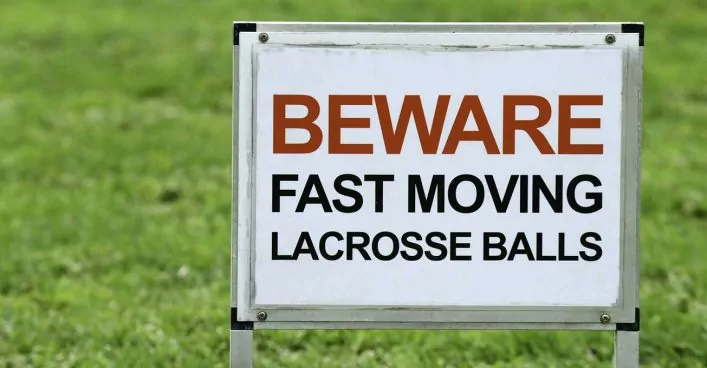 18 Lacrosse Goalie Drills to Improve Your GameApril 24, 2025
18 Lacrosse Goalie Drills to Improve Your GameApril 24, 2025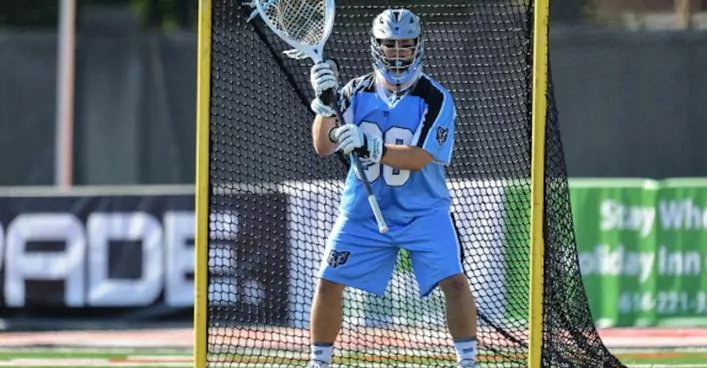 7 Elements of a Great Lacrosse Goalie StanceAug. 1, 2020
7 Elements of a Great Lacrosse Goalie StanceAug. 1, 2020 12 Lacrosse Goalie Tips To Take Your Game to the Next LevelSeptember 10, 2024
12 Lacrosse Goalie Tips To Take Your Game to the Next LevelSeptember 10, 2024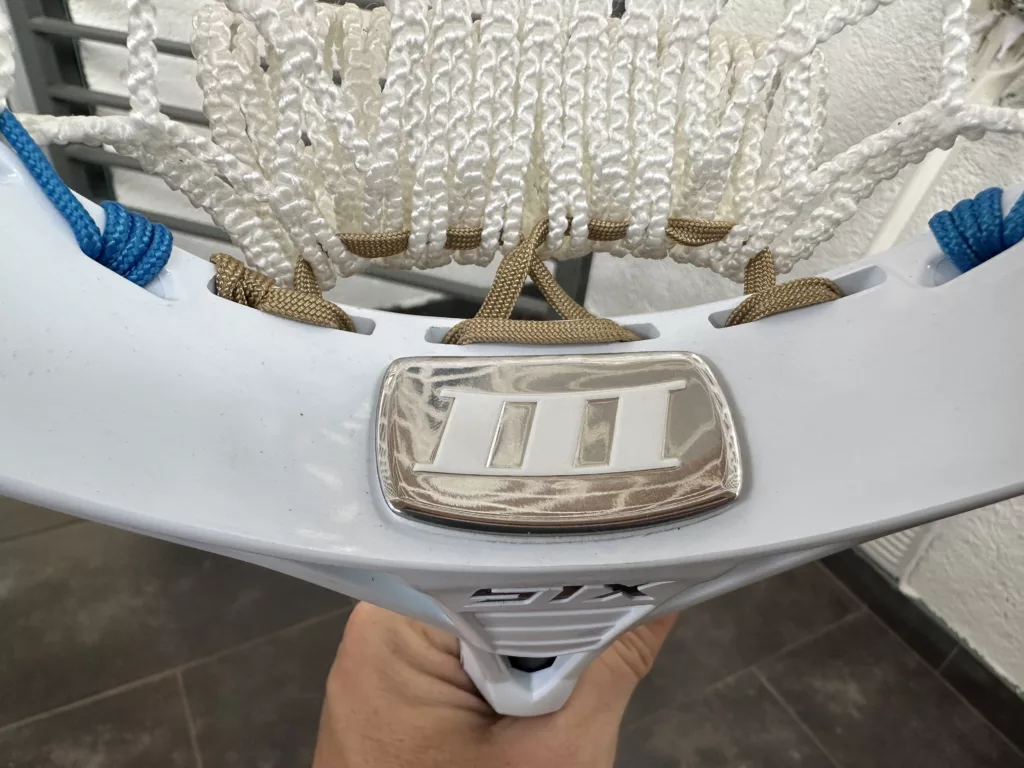 STX Eclipse 3 Goalie Head ReviewApril 24, 2025
STX Eclipse 3 Goalie Head ReviewApril 24, 2025 Lacrosse Goalie WorkoutAug. 12, 2019
Lacrosse Goalie WorkoutAug. 12, 2019 The Basics of Making a SaveJune 29, 2021
The Basics of Making a SaveJune 29, 2021

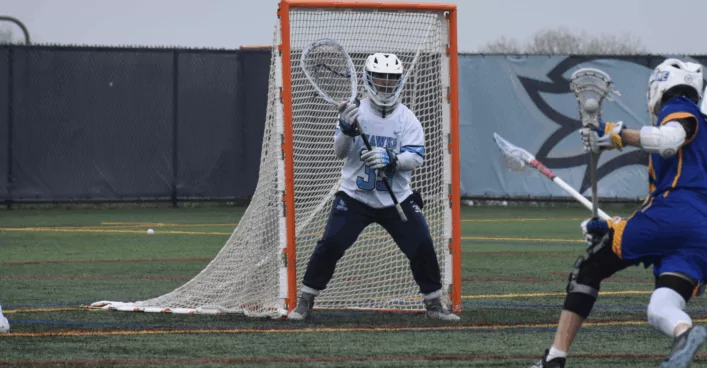

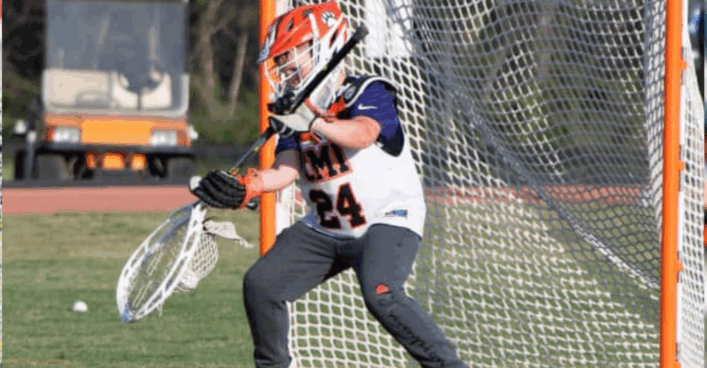
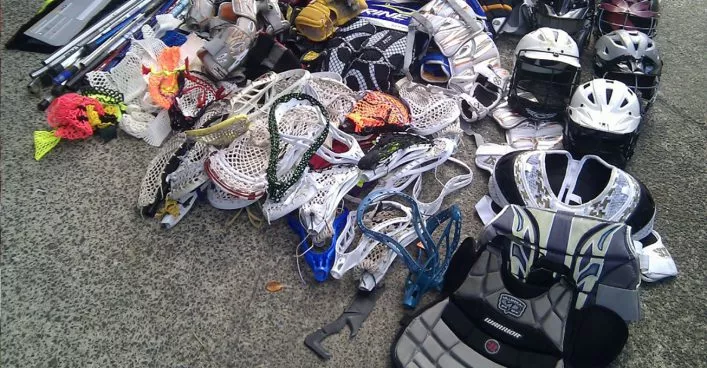

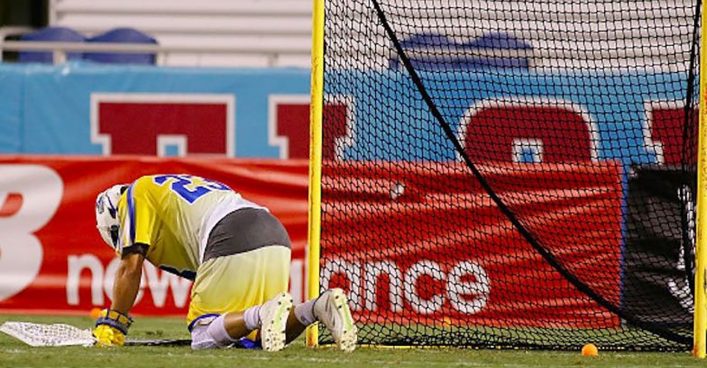
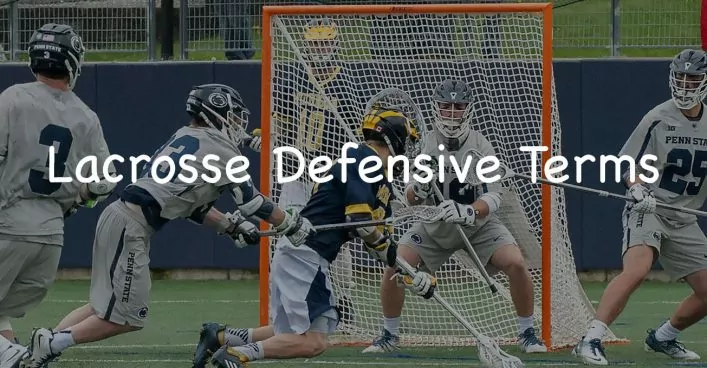
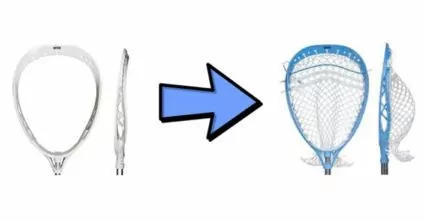










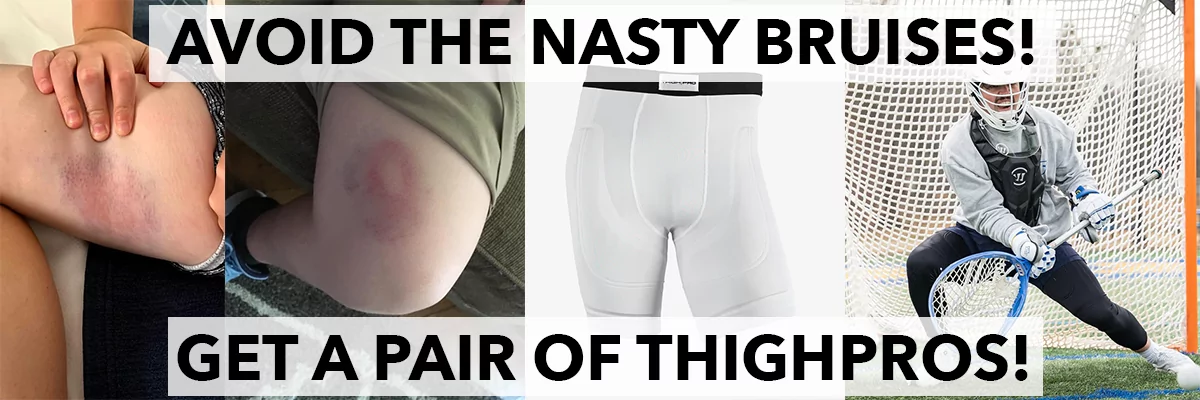

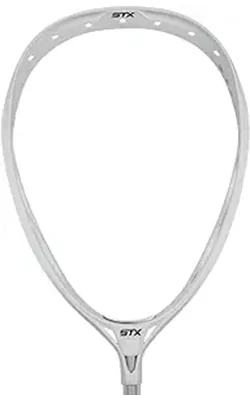

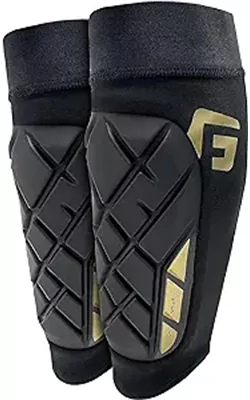
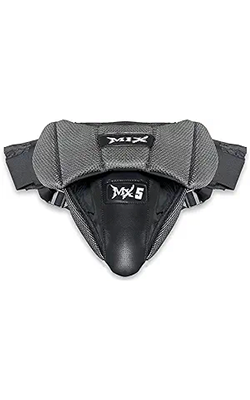

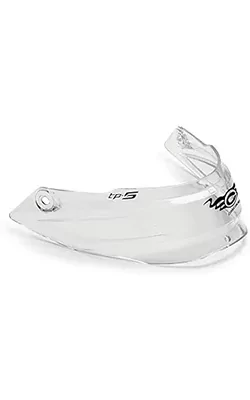
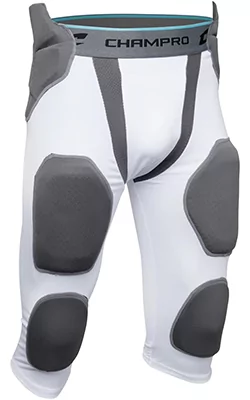







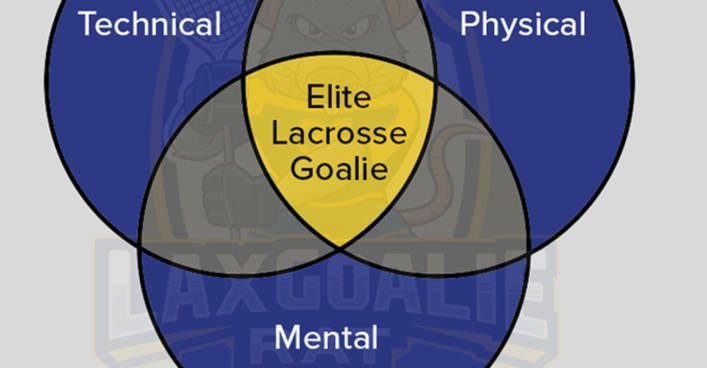
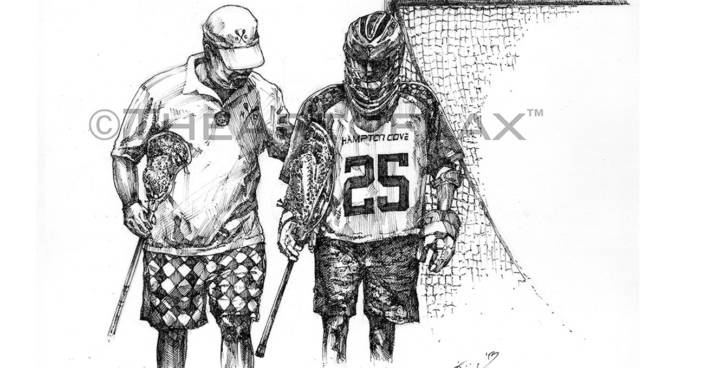
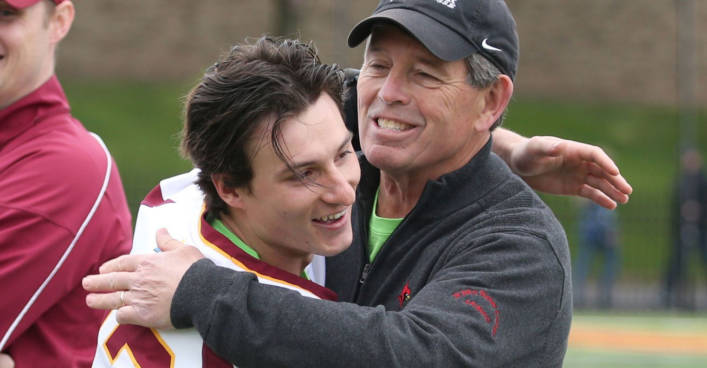

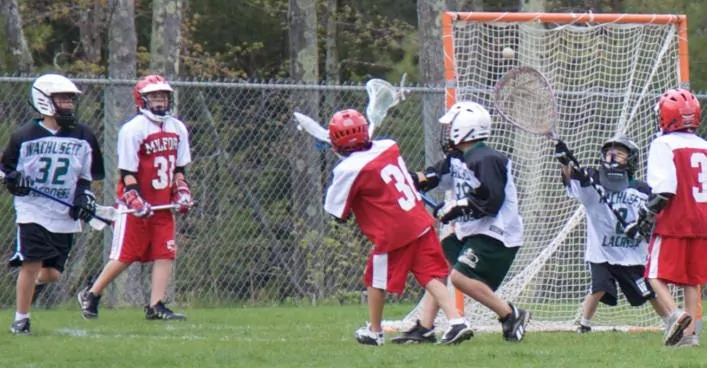
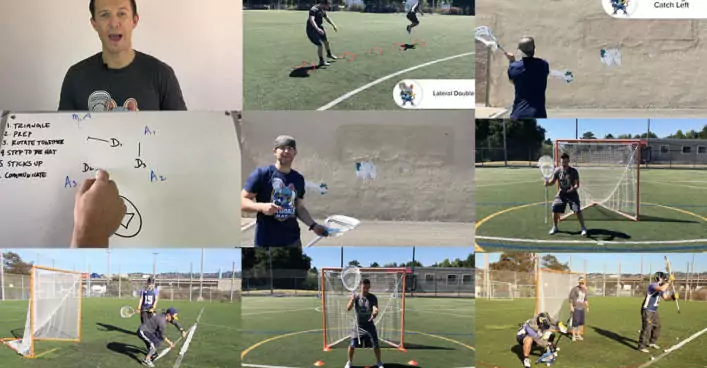









How do you feel about goalies using their stick to hit the side posts of the cage to check positioning? It seems like any situation where you take one hand off the stick, even if the ball isn’t all the way in shot range, that you wouldn’t want to be caught off guard. However, I still see many goalies do this, even at college+ levels. I have consciously tried to avoid this habit but i find myself doing it or grabbing a post to check my distance, is it worth trying to stop or is it not a terrible habit?
Hi Andrew! Thanks for the comment and question. Checking your positioning by tapping the posts with your stick isn’t ideal. It’s better than taking your eye of the ball but still not great. As you get more experience with your arc you should be able to find the right position without hitting the post.
Hi there. Great advice for a solid foundation of skills every goalie should posses. I’ve coached goalie at every age level and you’ll see these habits everywhere. Three more habits that drive me nuts are dropping your hands before the shot. I like to call it unnecessary movement. Second, kind of a tag along to not kicking your foot, don’t step to far. I see a lot of talented goalies over step and it leaves them out of position. Last, a ton of guys throw there hands at the shot. I believe a goalie should finish the save in the same position he started other than the rotation of his hands. I tell all my guys imagine there is a pane of glass in front of your hands and behind them. DON’T BREAK THE GLASS! What I mean by that is don’t let your stick tilt forward or back because all you are doing is reducing the surface area of the stick. Granted sometimes you have to reach but keep your hands on the same level as you started. Thanks for all you great tips and helping move the game forward!
Great points! Those are definitely bad habits I see in goalies too. Thanks for that comment Matt.
Hi there, I have just recently started playing goalie for my High School because our starting goalie is a senior now and our coach needed someone to step up and play for the next few years (about 2 and a half weeks now). Now as a sophomore in High School, having played midfield as a freshman I have many of these bad habits now just recently starting to play goalie. One of the habits I have mentioned in this post is going down to my knees on low shots, however; I do not fall down to my knees. I step with the lead foot and my back leg drops down sideways (to me sort of like a backstop for my stick). I was wondering if this is truly a bad habit to have since it does not impair my time getting back up. I was also wondering if you have any tips or suggestions on how to keep my eye on the ball, take good step towards the ball, stopping stutter step/fake steps, and being afraid of the ball/getting hit by the ball. Another habit I have, having previously played midfield for a few years before just now switching to goalie I have a tendency to take the ball out of the crease quickly after saves and I tend to run the ball up. Even if I have an attack man on me if my poles are covered. Is this a bad habit or something I shouldn’t do? Thank you for any sort of help with these points or any type or response!
Hey Danny! Welcome to the club of goalies. As I mention in the post, not all goalie coaches consider going to a knee a bad habit. I don’t coach that style, but if its working for you no need to change. But your back leg should be taking a trail step to help get the body behind the ball faster. For keeping eye on the ball, drills. During every drill practice ridiculous eye focus. Also search doc drill and eye focus drill on this site. For stepping – https://laxgoalierat.com/6-lacrosse-goalie-drills-to-improve-stepping-to-the-shot/. For flinching/being afraid – this takes time. It’s a pretty natural response for beginners. Make sure you’re protected with the right pads, that’ll help. Flinching/being afraid goes away with experience, you’ll just have to override your body’s natural response by seeing lots of shots. For clearing read this – https://laxgoalierat.com/the-lacrosse-goalies-guide-to-clearing/. Hope that helps.
Should a goalie turn around to track the ball when a player carries it behind the net?
Yes. Read this post for full description of how to play with ball at X.
How would you stop a goalie kicking out instead of stepping behind the ball if he frequently does?
Same way you would break any habit. Rep after rep of the correct form through drills until a non-kick is no longer a habit. Every time he or she kicks at the ball you could have them do sprints or pushups or some form of exercise to punish the habit we want to avoid. Hope that helps.
Coach Damon,
So often I see new as well as veteran Goalies go “turtle” on a shot coming at them. I use to practice with them by having them stand behind a chain link fence with out their helmet on, there hands behind there back, and with there head a foot from the fence. I then shoot balls at there head until they stop going “turtle” or looking away or ultimately even blinking as the shot hits the fence right in front of there face. Coach Guy Van Arsdale who was an All American Goalie at Hobart taught me this drill.
Unfortunately, softer lacrosse balls (concussion protocol) allows balls to come through the fence making this drill dangerous. Also dirt on the balls would also get into the goalies eyes.
What I do now is have our Goalies warm-up by leaving their helmet on with their hands behind there back and have the other goalie toss balls at the mask from 3 or 4 feet away until the Goalie stops blinking. We do that every day (practice or game day) of the season. Just some thoughts on Goalie drills.
Coach Nowak
Thanks for adding that Coach. Interesting drill – I’ve never done that one before. May have to start trying it.
I’ve noticed that I have sort of a ice hockey style of goalie tending, and my goalie coach has as well. Where I will sweep upward with my stick when I make a save, sort of like a glove save. Is this good or bad? If so how do I change it?
Hi Ben – Kinda tough to visualize what you’re saying. If your top hand is going directly to the ball in the save movement – then that’s perfect. If not, it needs a change. Try Egg Toss (Goalie Lead Hand Drill) to work on that.
I do a lot of these bad habits! I will keep working in order to break these habits.
We all do these habits from time to time. That’s why its good to recognize them and fix it as soon as possible.
Being a 6 3″ goalie and a hockey defenceman i find my self dropping to my knees alot in lacrosse. And when im in the zone dropping to my knees can be key in making those at the feet saves but i completly agree with you when you say alot of the falling to the knees is a result of being nervous. I find that when im tired, or just plain out of it i find myself dropping either before or as theyre releasing the shot. Its basically me flinching somtimes, although being so tall i do like to squat down giving myself the abilty to shoot up if i have to or stay low for a bounce shot.
Thanks for that comment Tom. Yeah I encourage goalies to stay on their feet for that reason. I do like that you’re squatting down lower in your stance, I think that makes perfect sense for taller goalies. It’s easier to explode up vs. exploding down.
Coach Damon….
May I respectfully disagree with one aspect of the way in which we learned the position…. I am the coach of an undefeated state champion team and was my self an all Ivy and hon mention all american goalie some many years ago .. Played for the NY Lacrosse Club and played semi pro hockey and coached youth hockey.. http://www.anthonyjparkinson…. and so I get a lot of flack for this change but I have the stats to prove its efficacy….. I have the goalies square the shooter and line them up correctly BUT I have them step side to side off that center stance and what happens is this : we get in the shooters head…the shooters miss the gage trying to shoot for net and so the scoring % is reduced by 20% documented….. and my top goalie went to a High point camp over the summer and was criticized by the coaches BUT recorded the best goals against % …… Kind regards…..tony
Thanks for the comment Tony. Not sure I 100% follow what you’re saying. Like you have them purposely give up a little extra part of the cage? Like baiting the shooter?
Coach Damon,
How can I get my HS goalie to stop dipping/dropping his hands when a shooter is winding up? It seems that whenever a shooter is in his windup, he starts to get low to the point where his butt is “below parallel” (think back to all of those lifting coaches :)). This obviously leaves the whole top of the cage exposed, and while he will make a lot of stops high, he often lets some in that are cupcakes.
Thank you,
To me that’s a fear response. Check this post on fear and goalies. Until he corrects the fear response you could try to have him setup with his hands higher than normal. Then when they drop before a shot they’ll be in good position to make a save.
Back in the wood stick “ice age” ’60’s, we goalies would aggressively charge a shot maker whenever they were close to the crease in order disrupt the shot making. I don’t see much of that today. I also don’t see a lot of “cutting down the angle” on most shots- possibly depending on reflexes.
I do know that doing the two things above increased my save percentage, and lowered the shots on goal, helping the defense a lot.
Have things changed in the game, eliminating the old basics of lacrosse goaltending?
I think you still some of the bigger body goalies (i.e. Scotty Rodgers) charging attackman close to the crease. But for smaller goalies it just doesn’t make sense. He just shrugs off the hit and dumps the ball into the open goal. I think they have a better chance of success trying to make the 1×1 save.
You’re right on the 2nd point. Does seem like a lot more goalies these days are playing a flat arc these days. The benefit of that is being able to see the ball a tick longer and having more time to make the save. I’m still a fan of a normal which does cut down the angle more.
aayvw4
8sojc9
What is a drill to not blink when the ball is coming at you